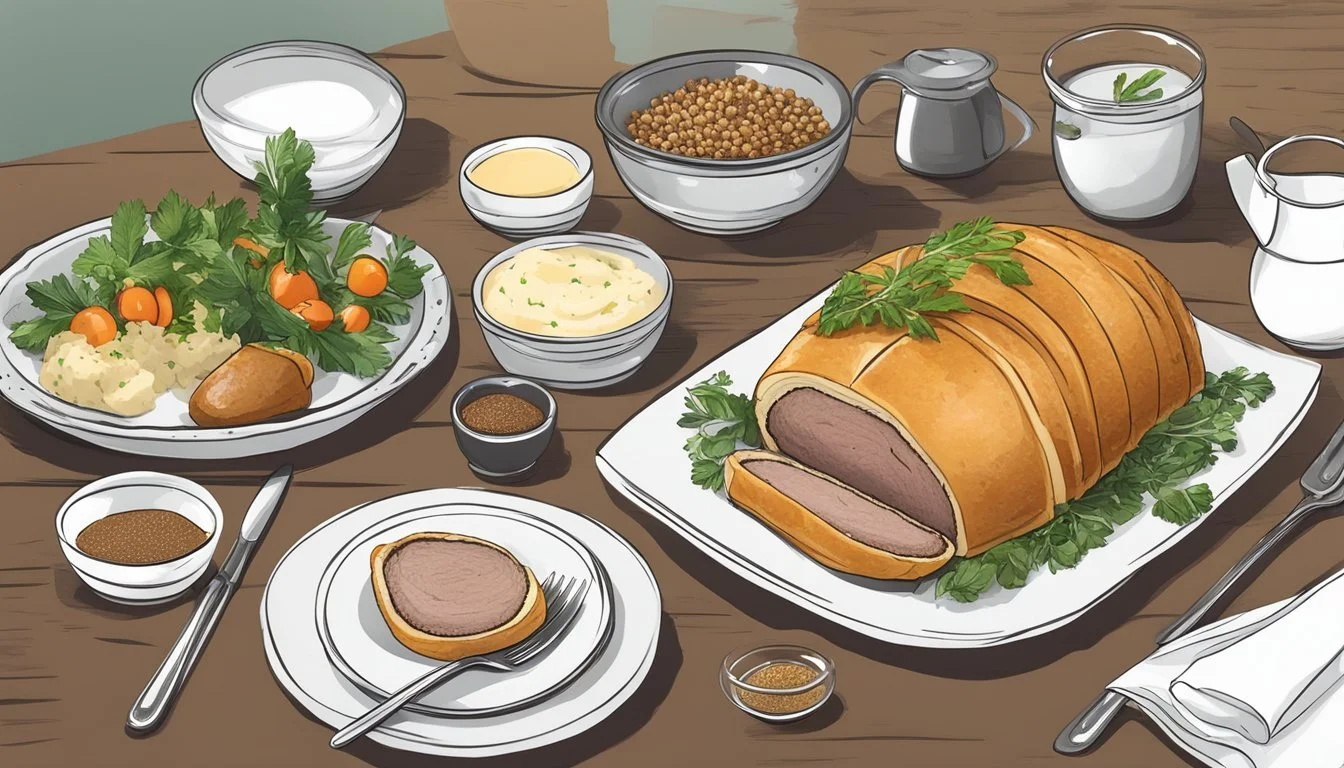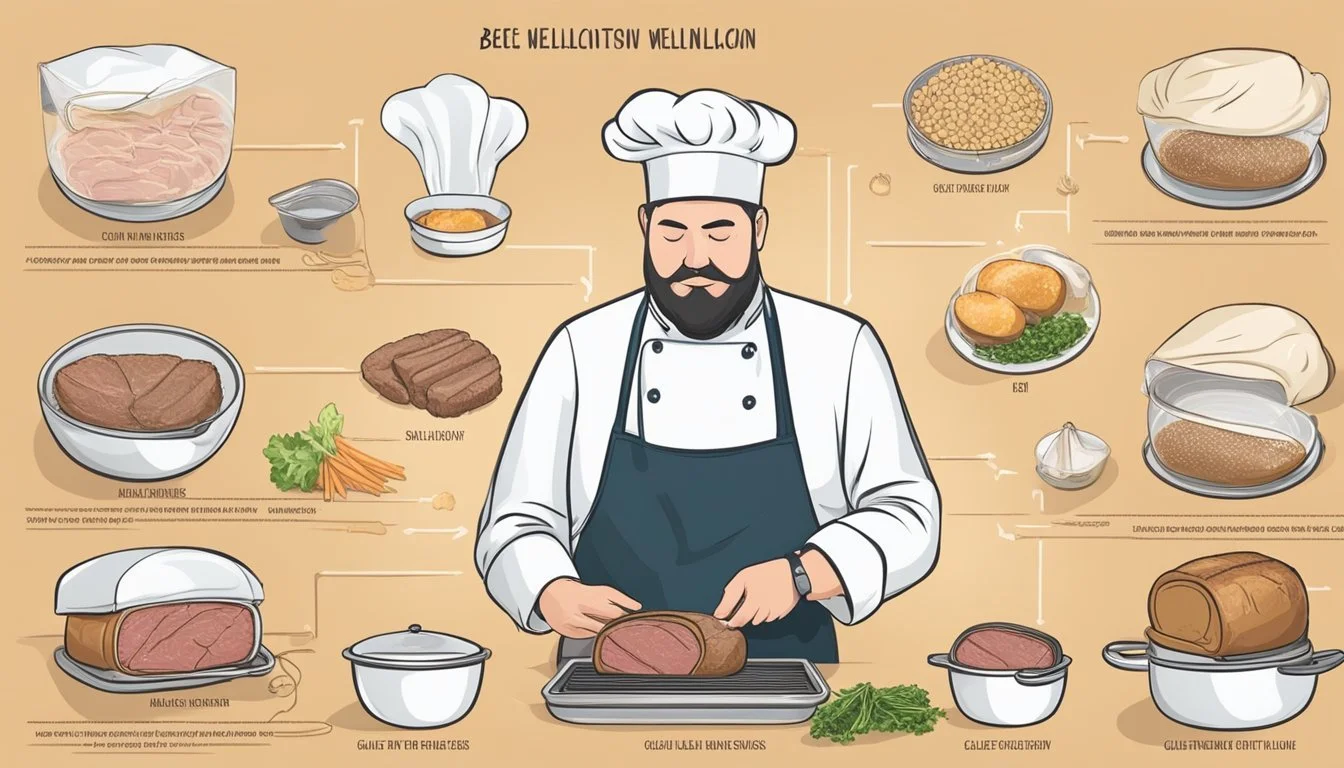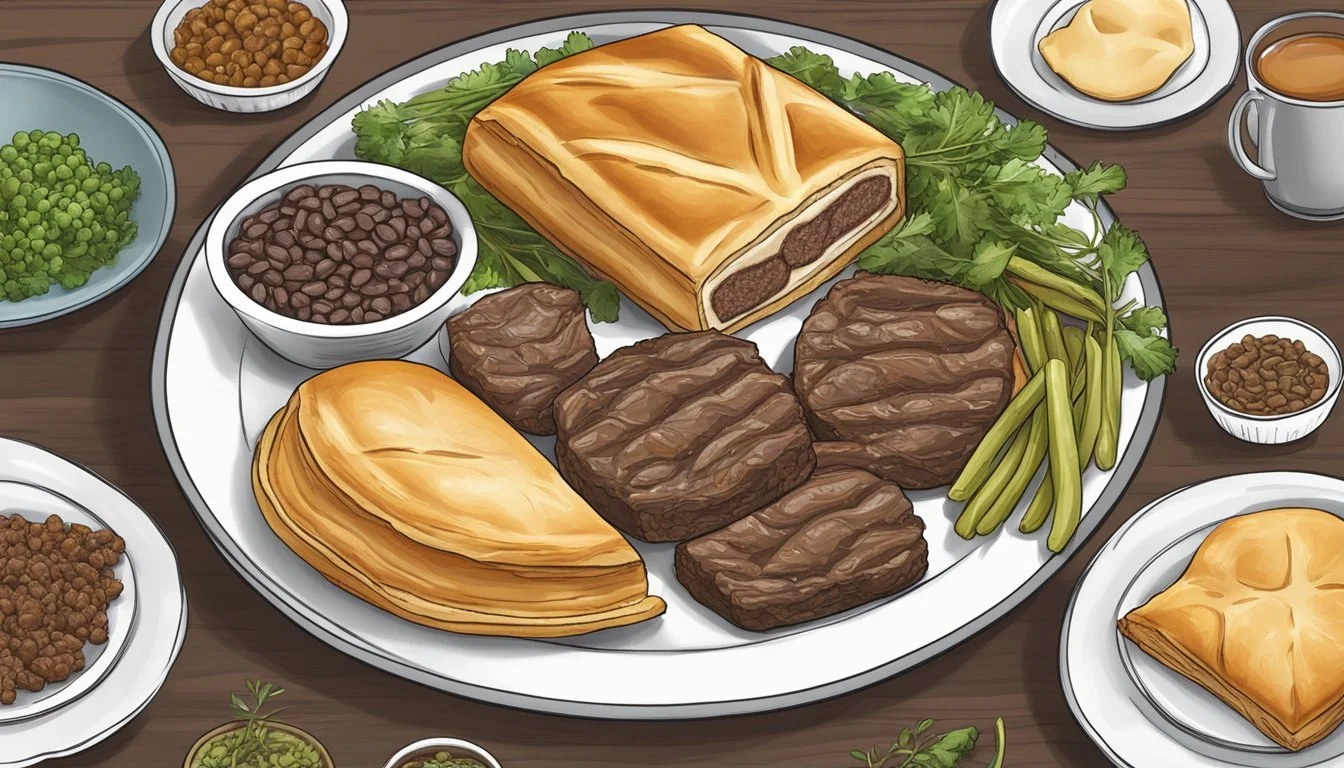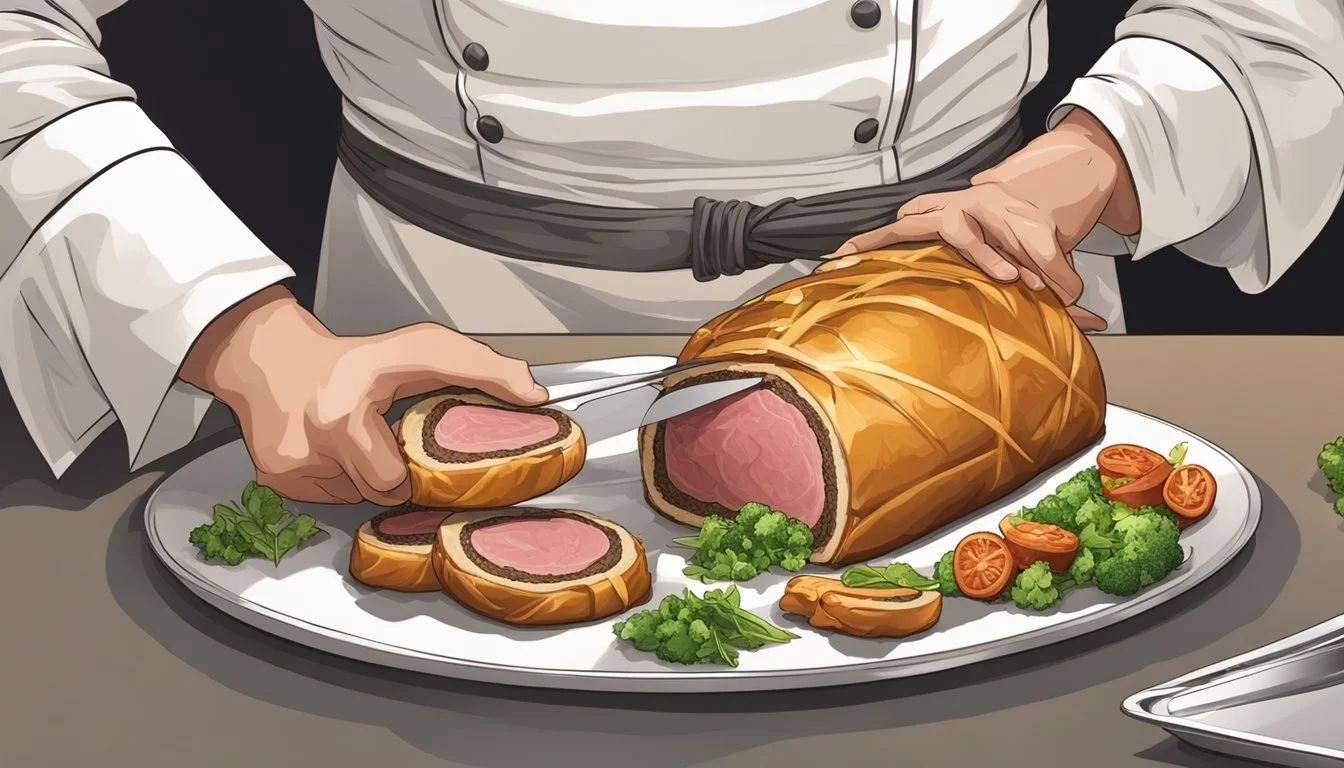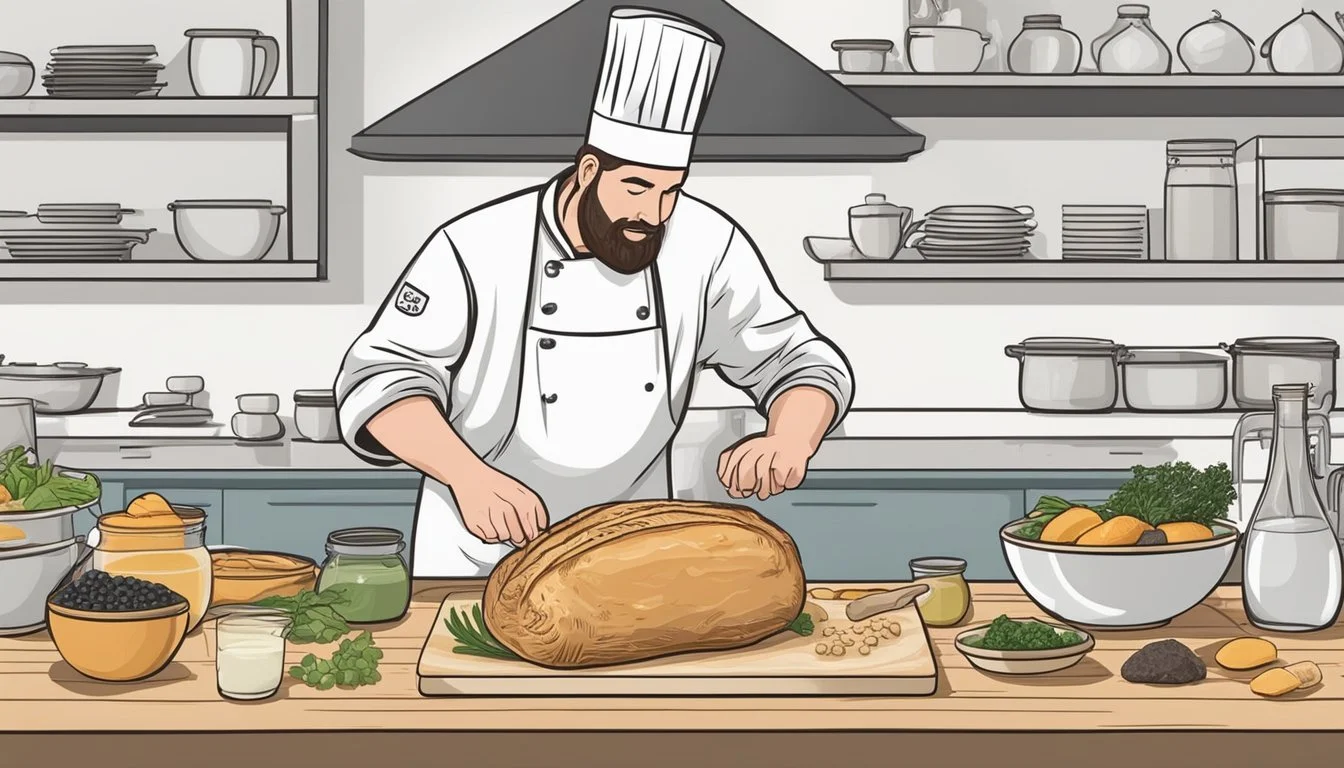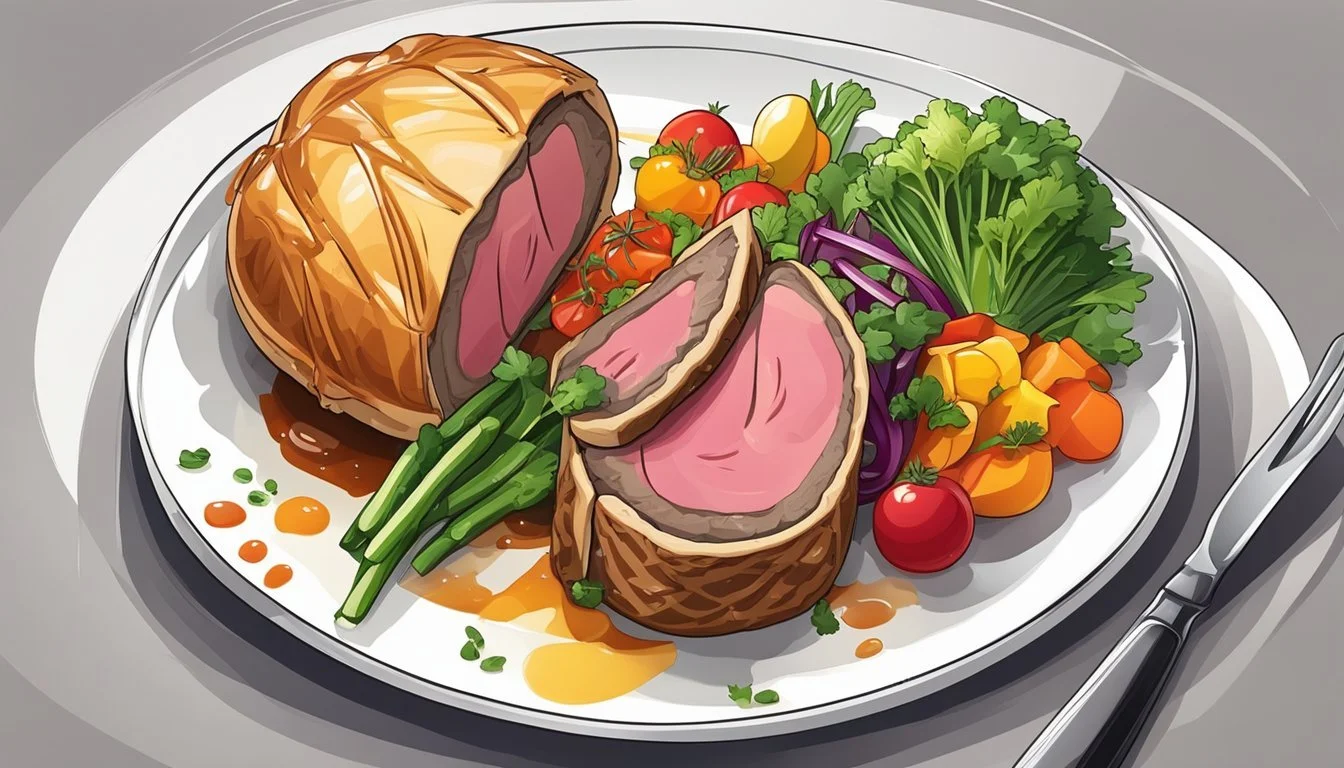Is Beef Wellington Gluten-Free?
Unveiling the Truth About This Classic Dish
Beef (What wine goes well with beef?) Wellington (What wine goes well with beef Wellington?) is a classic dish that traditionally consists of a tender fillet of beef, coated with duxelles and pâté, then wrapped in puff pastry and baked to perfection. However, for individuals adhering to a gluten-free diet due to health concerns such as celiac disease or gluten intolerance, the conventional preparation of Beef Wellington poses a dietary challenge due to the presence of gluten in standard puff pastry and potential cross-contamination with other gluten-containing ingredients.
The good news for those seeking gluten-free options is that Beef Wellington can indeed be prepared in a gluten-free manner. Crafting a gluten-free Beef Wellington involves selecting gluten-free puff pastry and ensuring that all other components, including the duxelles—a sautéed mixture of finely chopped mushrooms (What wine goes well with mushrooms?), onions, and herbs—do not contain gluten. Careful attention must be paid to the ingredients list on purchased products or, alternatively, homemade substitutes can be used to guarantee that the dish is safe for those avoiding gluten. With the availability of gluten-free ingredients expanding, creating a delicious and inclusive Beef Wellington is entirely feasible.
What Is Beef Wellington?
Beef Wellington is an esteemed dish in the culinary world, known for its rich flavors and elegant presentation. At its core is the beef tenderloin (What wine goes well with beef tenderloin?), a prime cut also referred to as filet mignon or beef fillet. This high-quality meat is prized for its tenderness and makes for the centerpiece of the dish.
Traditionally, the tenderloin is coated with a mixture called duxelles, which is a finely chopped blend of mushrooms and typically shallots, herbs, and garlic, cooked down into a paste. Another key component that can be included is pâté, which is spread over the meat, or prosciutto, an Italian dry-cured ham that is wrapped around the tenderloin. This all helps to add depth and complexity to the flavors.
To encase the beef and its rich layers, puff pastry is used for its light, buttery, and flaky qualities. The pastry locks in flavors and ensures a moist and juicy bite upon serving. When baked, the puff pastry turns golden brown, offering a delightful contrast in texture to the tender meat inside.
This dish is especially popular for special occasions and has a reputation for being a decadent and luxurious meal. Each component contributes to the overall experience:
Tenderloin: Provides the succulent, meaty base
Duxelles: Offers a savory, umami taste
Prosciutto/Pâté: Adds a rich, salty flavor
Puff Pastry: Delivers a crisp and buttery finish
For those seeking an indulgent culinary experience, Beef Wellington is a choice that combines these flavorful elements into one impressive dish.
Understanding Gluten in Cooking
Gluten is a mixture of proteins, primarily gliadin and glutenin, found in wheat, barley, and rye. In the context of cooking, gluten is known for providing elasticity and structure to doughs and batters, resulting in the signature chewy texture in baked goods.
For individuals with celiac disease or gluten sensitivity, consuming gluten can lead to an immune response that damages the lining of the small intestine, leading to symptoms like bloating, gas, and abdominal pain. As such, gluten-free alternatives are essential for these individuals' diets.
When preparing gluten-free dishes like Beef Wellington, one must substitute the traditional flours that contain gluten. Gluten-free flour mixes may include a variety of ground grains, such as rice or corn, and often require a binding agent such as xanthan gum to replicate the binding properties of gluten.
Key Components in Gluten-Free Cooking:
Flour: Gluten-free cooking uses flour alternatives like rice, almond, or coconut flour.
Binding Agent: Xanthan gum or guar gum can be used to replace gluten's binding characteristics.
Awareness: Cross-contamination with gluten-containing flours should be avoided.
For Beef Wellington, the primary concern is the puff pastry, which traditionally contains gluten-rich wheat flour. To make it gluten-free, chefs use gluten-free puff pastry, which should be checked for certification to ensure it's safe for those with celiac disease or gluten sensitivities.
Ensuring an entirely gluten-free Beef Wellington requires diligence in selecting all ingredients, including fillings and sauces, to avoid any hidden gluten.
Ingredients of Beef Wellington
Classic Beef Wellington is known for its sumptuous layers and flavors, but traditional versions are not gluten-free due to the use of regular flour in puff pastry. When preparing a gluten-free Beef Wellington, each component requires careful selection to ensure adherence to a gluten-free diet while striving to match the rich taste and texture of the original.
Making Gluten-Free Puff Pastry
To create gluten-free puff pastry, a blend of gluten-free flours, including rice flour or a pre-made gluten-free flour mix, is typically combined with cold butter, egg for binding, a pinch of salt, and xanthan gum to mimic the elasticity and sturdiness of gluten. It's crucial to
Mix the dough until just combined,
Form it into a rectangle,
Chill the dough to keep the butter firm, and
Roll and fold multiple times to achieve the desired layers.
Preparing the Beef Tenderloin
The beef tenderloin, the centerpiece of the dish, should be seasoned with kosher salt and ground black pepper. It is then seared in olive oil to a perfect brown crust, locking in juices. The use of thyme adds an aromatic component. The tenderloin is then allowed to rest and reach room temperature before assembly.
The Duxelles
The duxelles is a finely chopped mixture of mushrooms, shallots, and garlic that is sautéed in unsalted butter until it becomes a paste-like consistency. Seasoned with thyme, salt, and black pepper, and sometimes deglazed with red wine, duxelles adds a deep, savory flavor to complement the beef.
Additional Components
To assemble, additional layers are added:
Prosciutto ham, which envelops the tenderloin to add a hint of saltiness and to keep the duxelles in place.
Dijon mustard, coated on the cooled beef for a touch of piquancy.
An egg wash brushed on the puff pastry for a golden finish after baking.
These ingredients are carefully layered to preserve the integrity of each flavor when crafting the gluten-free version of this iconic dish.
The Construction of Beef Wellington
The construction of Beef Wellington involves detailed layering and precise wrapping. Mastery in these steps is key to achieving the perfect balance of textures and flavors.
Assembling the Layers
In crafting Beef Wellington, one begins with a beef tenderloin seasoned generously with salt and coated with mustard. The tenderloin is then wrapped in prosciutto, which has been laid out on a work surface to form an overlapping rectangle. A layer of duxelles—a mixture primarily composed of finely chopped mushrooms, onions, and herbs—is spread over the prosciutto. The beef is placed on top of this flavorful bed and the layers are rolled tightly together.
Wrapping and Chilling
After the tenderloin has been encased with the prosciutto and duxelles, it's wrapped in cling film or plastic wrap to retain its shape. This bundle needs to be chilled in the refrigerator to ensure the layers set properly. The chilling solidifies the fats and makes the Wellington easier to handle in later stages.
Scoring and Egg Wash
Once the meat has properly chilled, the Wellington is carefully unwrapped and encased in puff pastry. Prior to baking, the pastry is often scored with a knife, creating a pattern that will bake into a decorative finish. Finally, an egg wash—a beaten egg, sometimes mixed with water or milk—is brushed over the pastry. This gives the crust a golden and crisp appearance. It’s now ready to be placed on a baking sheet and cooked until the pastry puffs and turns a rich golden brown color.
Baking and Serving
A successful Beef Wellington requires attention to oven temperature and cooking time. One must allow the dish to rest before carving to ensure the meat is succulent and the pastry remains crisp.
Preheating the Oven
Preheat the oven to a high temperature, typically around 425 degrees Fahrenheit (220 degrees Celsius), to ensure a perfectly flaky pastry. The exact temperature may vary but starting the cooking process at a higher temperature creates the best crust for your Beef Wellington.
Cooking to the Right Temperature
Cook the Beef Wellington until the internal temperature of the meat reaches your desired level of doneness. An instant-read thermometer is instrumental here; for medium-rare, aim for an internal temperature of 135-140 degrees Fahrenheit (approximately 57-60 degrees Celsius). The pastry should be golden brown, which takes about 25-30 minutes of bake time.
Resting and Carving
After baking, let the Beef Wellington rest for a few minutes before slicing. This resting period allows the juices to redistribute, ensuring the beef is moist and tender when served. Use a sharp knife to carve into servings, ensuring the pastry doesn't crumble and the slices remain intact for a beautiful presentation at dinner.
Customizing the Recipe for Dietary Restrictions
Crafting a Beef Wellington that complies with gluten-free dietary restrictions involves substituting specific ingredients of the traditional recipe. Key substitutions center around the puff pastry and duxelles, ensuring no gluten is present while maintaining the dish’s signature flavors and textures.
Alternative Ingredients for Gluten-Free Diets
Gluten-free Beef Wellington requires a careful selection of alternative ingredients to replace traditional wheat-based puff pastry. The most critical replacement is with a gluten-free puff pastry. Various pre-made gluten-free puff pastries are available on the market, typically using a blend of gluten-free flours such as rice flour, tapioca flour, and potato starch. Homemade pastry can be made using gluten-free flour along with xanthan gum, which acts as a binding agent to replicate the elasticity and texture of gluten.
For those opting to make their crust from scratch, here's a table of gluten-free flour components:
Gluten-Free Flour Components Purpose Rice Flour Provides structure Tapioca Flour Adds chewiness Potato Starch Improves moisture retention Xanthan Gum Binds ingredients
Modifying Traditional Ingredients
The filling of Beef Wellington commonly includes pâté or pate, which often contains gluten. A simple adjustment is using gluten-free pâté or substituting it with a mixture of duxelles, a finely chopped combination of mushrooms, shallots, and herbs that have been sautéed and reduced to a paste-like consistency.
In the assembly of Beef Wellington, prosciutto is traditionally used to wrap the beef. Prosciutto ham is naturally gluten-free and provides an excellent way to retain the moisture of the meat while introducing an additional layer of flavor.
For the mushroom duxelles, be sure to choose types of mushrooms that are well-suited for fine chopping and sautéing, such as cremini or chestnut mushrooms. When preparing duxelles, all ingredients including garnishes and liquids added to the mushrooms must be confirmed as gluten-free to ensure the entire dish is safe for those with dietary restrictions.
Keep the seasoning simple with gluten-free condiments, and always verify packaging labels for any hidden sources of gluten. By carefully selecting and modifying ingredients, one can prepare a Beef Wellington that is both indulgent and safe for gluten-free diets.
Pairing and Presentation
When serving Beef Wellington as the main course of a dinner meal, the presentation is just as crucial as the dish itself. It's traditionally presented whole and sliced at the table, revealing its delicious layers. A classic Beef Wellington with a golden brown and flaky crust makes an impressive centerpiece that's sure to elicit admiration from diners.
Pairing:
The rich flavors of Beef Wellington pair exquisitely with certain types of wine and condiments. Below is a suggested pairing framework to enhance the meal:
Wine Selection Condiment Full-bodied red wines Balsamic vinegar reduction Cabernet Sauvignon Classic bordelaise sauce Merlot
Balsamic Vinegar:
A balsamic vinegar reduction can brilliantly complement the dish, adding a sweetness and tartness that balances the savory components. It should be drizzled sparingly to not overpower the flavors of the beef and pastry.
Wine:
Cabernet Sauvignon and Merlot are excellent choices for their robust character, which matches the intensity of the beef. The notes of these red wines harmonize with the umami of the meat and the earthy undertones provided by the mushroom duxelles typically found in Beef Wellington.
Table Setting:
The table should be set to reflect the elegance of the meal, with fine china, polished silverware, and crystal wine glasses.
In summary, when one presents Beef Wellington as a centerpiece for a special dinner, attention to the accompaniments can elevate the dining experience. The combination of precisely chosen wine and condiments, along with a thoughtful table setting, creates a harmonious and memorable meal.
Tips for a Perfect Gluten-Free Beef Wellington
Creating a Gluten-Free Beef Wellington is a culinary endeavor that requires a few strategic adjustments to the traditional recipe. The key to success lies in replicating the texture and taste using gluten-free ingredients.
First, the gluten-free puff pastry is the cornerstone of a good Wellington. One should look for high-quality gluten-free flour to dust the countertop before rolling out the pastry to the required thickness. The dough should be rolled into a rectangle large enough to envelop the beef tenderloin completely.
The beef needs to be seared in a hot skillet with some oil to create a crisp exterior. This step is crucial as it helps to lock in the beef's juices. Allow the beef to chill in the refrigerator after searing it, which aids in keeping the pastry crisp during baking.
As for the Wellington assembly, brushing the pastry with beaten eggs ensures that it achieves a golden and flaky crust. The edges of the pastry must be securely wrapped around the beef, and one should crimp the edges to seal in the flavors and prevent any leaks during the cooking process.
When ready to bake, preheat the oven to 400°F (200°C). Placing the prepared Wellington on a parchment-lined baking sheet is vital to prevent sticking and ease the removal after baking.
Kitchen Task Tip Prepping the Pastry Dust gluten-free flour; roll to a ¼ inch thick rectangle. Searing the Beef High heat until a crisp crust forms, then chill. Assembling Wellington Brush pastry with egg wash; crimp edges tightly. Baking Preheat oven to 400°F; bake for 25-30 minutes.
It's crucial to monitor the dish as it bakes, aiming for an internal temperature of 135°F (57°C) for medium-rare doneness. After removal from the oven, allowing the Wellington to rest before slicing will ensure that the juices redistribute, offering a moist and flavorful experience. By adhering to these tips, one can craft a remarkable Gluten-Free Beef Wellington that rivals its classic counterpart.

